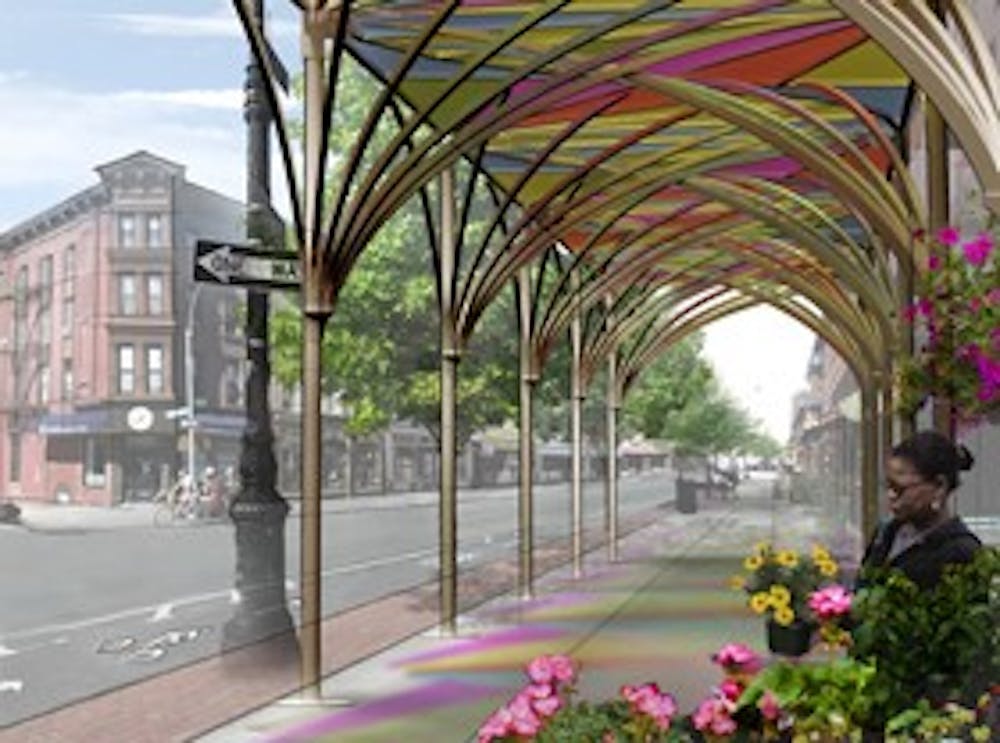
Thanks to a Penn School of Design student, umbrellas will soon do away with sidewalk sheds on the streets of New York City.
First-year Design student Young-Hwan Choi’s project, “Urban Umbrella,” presents a sleek, environmentally friendly alternative to urban sheds, structures that are legally mandated in New York City to keep pedestrians safe from falling debris in construction sites.
As winner of the urbanSHED International Design Competition held by the American Institute of Architects, Choi’s design earned him a cash prize of $10,000 and the chance to see his work constructed in downtown Manhattan by the end of the summer.
The competition was carried out in two phases, the first of which pared down 164 designs submitted by professionals and students from more than 28 countries to three finalists. Of the finalists, Choi was the only student.
The second stage involved collaborating with professionals to refine the design to meet technical requirements. Choi worked with architect Andrés Cortés and engineer Sarrah Khan of Agencie Group.
When Choi first visited New York City over the summer, he was struck by how scaffolds were part of the urban experience, he said. New York City has about 6,000 scaffolds.
Sheds are intended to be temporary structures with an expected life of six to 12 months, explained Cortés. However, with the economic downturn, they often remain in place longer than intended because of unfinished construction projects.
“It’s become part of urban architecture,” he said.
Choi began his design by simplifying the urban shed — which he described as “complicated” — to its most basic elements.
Ultimately, Choi’s structure can be arranged to negotiate various urban obstacles, such as mailboxes, Cortés said.
The versatility of the structure allows the possibility of distinct “mosaics” that are unique to each environment, he added.
Additionally, he said, panels that make up the umbrella can be used as a canvas for public art.
Choi envisions urban umbrellas as helping “bring new street culture to New York City.”
Urban umbrellas will be able to sustain 300 pounds-per-square-foot in accordance with urbanSHED requirements, Cortés said. He added that the design is environmentally friendly, allowing light to pass through while minimizing solar reflection — which can contribute to an increase in temperature.
The project was “really about teamwork,” said Choi, who made several trips to New York during the fall semester to work with the professionals.
Choi, who is from South Korea, added that the project was difficult because of language barriers and adjustments to life in the United States during his first semester. “But the team members were very supportive,” he said.
Choi was also grateful for support from Design Dean Marilyn Jordan Taylor, who helped him coordinate his schedule so he could continue working on his design in New York.
The Daily Pennsylvanian is an independent, student-run newspaper. Please consider making a donation to support the coverage that shapes the University. Your generosity ensures a future of strong journalism at Penn.
DonatePlease note All comments are eligible for publication in The Daily Pennsylvanian.




